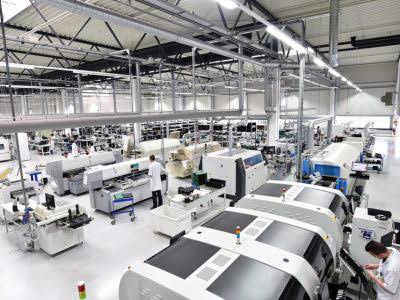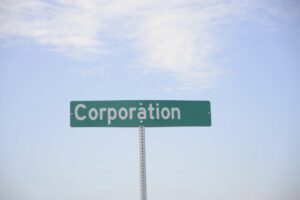
Tracking your performance using these numbers is vital to maintaining and expanding a profitable business. The challenge is in the details, and the arduous, often-tedious job of allocating costs, calculating COGS, managing key indicator accounts, and more. Wineries are unique operations, and their accounting and bookkeeping must be unique to match. Getting bogged down or lost trying to handle it all in-house is a recipe for subpar growth, or worse. The key to accurate billback accounting lies in deducting them directly from your gross sales before calculating COGS.

Valued Industry Perspectives

ZarMoney’s advanced inventory management ensures optimal stock levels, reducing wastage and unnecessary costs, solidifying its position as the leading winery management software. When calculating the cost of making and selling wine, it’s typically recommended to use accounting principles generally accepted in the United States of America (U.S. GAAP). Usually, U.S. GAAP is the standard used for financial statements in business. GAAP basis accounting is typically considered a more accurate reflection of a business’s performance rather than tax basis accounting or another financial reporting framework. Of course, there are other accounting issues that are specific to vineyards and wineries.
Innovative Sales Order Management

While less common in the wine industry due to its potential to undervalue older, high-quality inventory, LIFO can be advantageous in a high-inflation environment. By matching recent, higher costs against current revenues, LIFO can reduce taxable income, offering a tax deferral advantage. However, it’s worth noting that LIFO is not permitted under International Financial Reporting Standards (IFRS), limiting its applicability for wineries operating globally. ZarMoney’s customizable dashboard provides real-time insights, making it easier for winery owners to make informed decisions. The powerful tool goes a step further with its productive scheduler and secure remote access, making it a comprehensive solution for winery operations.
Accounting for Vineyards and Wineries (CPE Course)

This option can work well and has the advantage of keeping these expenses out of the main section of Profit & Loss if you are only calculating and adjusting COGS once a quarter or once a year. Course DescriptionThe operations of a vineyard or winery present unique issues for the accountant that require alterations to its chart of accounts, costing system, and many of its procedures. In short, this course is an essential desk reference for anyone engaged in the accounting for a vineyard or winery. Another method is Last-In, First-Out (LIFO), which assumes that the most recently produced items are sold first.
This method assumes that items flow through inventory in the order they were purchased or produced. The problem is that the distributors have to report the amount of cases sold back to the winery, usually in the form of a bill-back, so the winery ends up paying the distributor. This is an issue at month-end, when the winery is closing its books, since distributors may not report back about the number of cases sold for several weeks. And if you’re trying to close the books, this means that the amount of the depletion allowance has to be accrued, and it’s pretty much a guess.
Start Transition Planning
- Wine Direct shines in its offerings tailored for wine club management and winery marketing.
- This difference means that a vineyard and a winery are set up as two separate entities, with the vineyard using the cash basis and the winery using the accrual basis.
- Our team categorize, tracks, and allocates all the vital COGS and COGP numbers for you.
- ZarMoney’s feature facilitates smoother winery operations, enhancing its reputation as the leading winery management software.
- The problem is that the distributors have to report the amount of cases sold back to the winery, usually in the form of a bill-back, so the winery ends up paying the distributor.
When determining the benefits of this election, taxpayers should consider their method of accounting for pre-productive costs and the availability of bonus depreciation when the vine becomes productive. Wineries typically have multiple vintages of inventory on hand, so multiple years of production costs are trapped in inventory. For eligible taxpayers, this new method could generate significant deductions in the year of change because they’ll be able to deduct those prior year production costs that remain in inventory.
- Another approach involves leveraging short-term financing options like lines of credit or seasonal loans.
- Regardless of the ease of changing your entity structure, careful analysis should be completed prior to any change to mitigate any unintended consequences.
- DTTL and each of its member firms are legally separate and independent entities.
- To calculate COGS, periodically transfer the accumulated totals from these temporary ‘other expenses’ accounts on your P&L to the appropriate inventory accounts on your balance sheet.
- The availability of bonus depreciation for a winery is pretty widespread, but depending on how a taxpayer accounts for pre-productive costs, bonus depreciation may not be available for vineyard assets.
Doing so allows them to somewhat defer the recognition of income, so they can delay paying income taxes. A winery is not classified as a farm, since it’s more of a production operation, so wineries usually use the accrual basis of accounting. This difference means that a vineyard and a winery are set up as two separate entities, with the vineyard using the cash basis and the winery using the accrual basis.
Percentages are now doubled to 100% and, unlike with the Section 179 deduction, a taxpayer can take bonus depreciation on all eligible asset additions with no limit on the deduction or amount taken. Taxpayers can also claim vineyard accounting bonus depreciation on used assets, which prior to tax reform, only applied to new assets. Prior to tax reform, this method was only available for winery businesses with average annual gross receipts less than $1 million.
Collaborative Features
Offset tax liabilities in the years following a vineyard purchase if you bought property in the Napa Valley or other prestigious areas through an American Viticultural Area (AVA) valuation. Wineries frequently overlook how proactive tax plans can help significantly bolster finances. A strong, industry-focused tax strategy can help identify potential tax opportunities to take advantage of areas where you could reduce your tax exposure. Wineries sometimes offer a discount of a certain amount for each case that their distributors sell through to retailers.